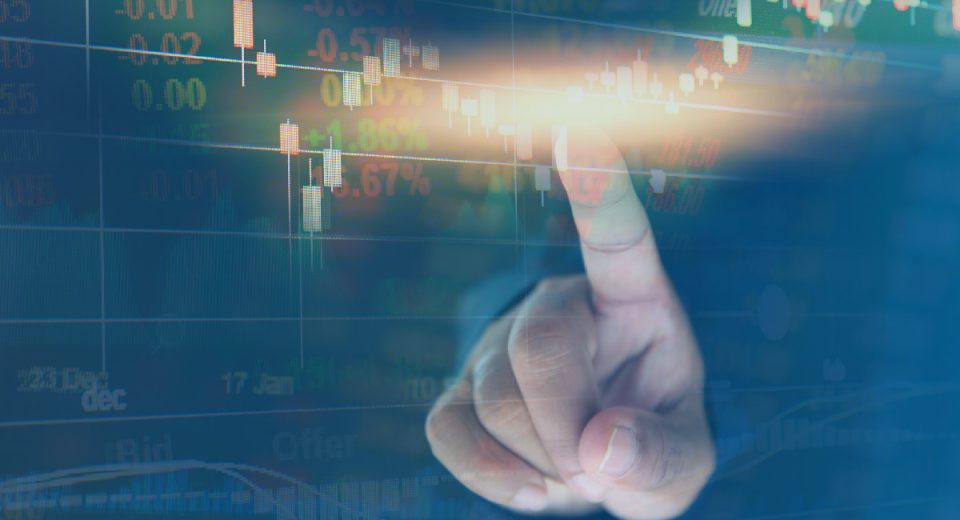How to Use Expert Advisors in Trading?

Technical analysis is the foundation of predicting price movements in the financial markets. It allows forex traders to prevent information overload, analysis paralysis, and trading on emotions due to volatility. While technical analysis can provide attractive entry and exit signals, some forex traders feel somewhat overwhelmed about selecting from the many indicators available. This is where Expert Advisors (EAs) help. EAs are automation tools that conduct market analysis and provide trading signals to assist traders in forex trading.
Why You Need EAs
Financial markets can be extremely volatile, presenting several opportunities through the day. This is especially true for the forex market, which is open 24 hours. The amount and speed of information inflow can be formidable and often difficult to manage even with technical analysis cutting out some of the noise.
Forex traders tend to get caught up in confirmation bias, especially when emotions interfere with trading decisions. Confirmation bias is the tendency to verify only what a forex trader feels is the ‘right’ speculation or interpretation of market movements. They may ignore trading signals that indicate otherwise. This may limit the vision of the trader and impact trading decisions.
Further to this, high-frequency and scalping techniques for forex trading require quick responses to market movements to tap on numerous opportunities, even the smaller moves.
In such situations, having an unbiased and logical “assistant” can be a game changer in keeping trading decisions rational and based purely on data. Expert advisors are customisable tools that monitor forex markets (or any market of your interest). They provide trading signals and help traders identify opportunities according to the configuration and individual preferences.
How Do EAs Work?
EAs are a set of predetermined rules to gauge the opportunities for a trader to take a position. These rules may include chart patterns, such as head-and-shoulders, and technical indicators, such as RSI (relative strength index) or MACD (moving averages convergence-divergence). The automated monitor observes financial markets to check if the rules of the trading setup are satisfied. When all rules align with market indications, the expert advisor delivers the trading signal to the trader. This is a good way for forex traders with less experience to learn while trading and prevent emotions from interfering with their decisions. The merits of using an EA include:
- Analysis automation
- Non-emotional trading
- Round-the-clock availability
- Extensive backtesting
Are EAs Trading Bots?
For a long time, EAs were simply “advisors,” with no ability to open and close positions. With advancements in technology and the popularity of algorithmic trading, forex robots or expert advisor robots have gained immense popularity. These robots are customisable and require additional information. Certain expert advisors and EA-bots are highly customisable and allow traders to personalise the generation of trading signals and complete the job by executing the trade. The personalisation may include the trader’s risk tolerance, capital availability, preferred trading strategy, etc. The EA-bot automatically takes positions without the need for the trader to do anything. Forex traders can alternate between manual trading and using the EA when they are away from their screen.
Steps to Use EA in Trading
Once you have your trading plan in place, you can use an EA by following the steps below:
- Accessing EAsEAs are available in MetaTrader 4 and MetaTrader 5. Open MT4 or MT5, and follow this path:File >> Open Data Folder >> MQL4 or MQL5 >> Experts >> AdvisorsYou can check out more options for free and paid Expert Advisors directly on the MQL5 site for both MT4 and MT5.
- Choose an Expert AdvisorCheck the EA’s customer reviews and testimonials, customisability, and compatibility with your trading preferences. If you choose a paid expert advisor, consider the payment methods and models, like one-time fee or subscription based. It’s a good idea to check the customer service features of the EA provider because you may need support when implementing the first one. Expert forex traders often get their trading plans converted to an EA to expedite decision-making. This is a paid service offered by EA providers. If you know coding, you can even create your own expert advisor without paying anyone. There are some freely available ones that you can begin with. For paid ones, do check if you can get a free trial.
- Backtest the EAAfter installing the EA, backtest it with different market conditions for your chosen assets. You can also backtest it on other financial instruments and simulated data. Test various configurations to see how each works with the different data and how it responds to fresh simulated data.
- Apply to Demo AccountFinally, try out the trade setup with the EA on your demo account to understand how well you are able to use it. Practice and track the performance of your trades before entering the live markets.
- Monitor and RefineDon’t blindly place trades based on the trading signals provided the EA. It’s a good idea to monitor its performance and make adjustments to the configuration.
While EAs do a lot of legwork for you, the biggest mistake is to trust it enough to ignore risk management. Even the most experienced traders using trading EAs and EA-bots use sound risk management strategies to minimise risks and preserve gains. Continue to learn about the forex market and refine your strategy while updating the EA configuration as you go.
A common practice among EA users is to opt for the VPS (virtual private server). Since EAs work 24/7, it is beneficial to have a dedicated server for uninterrupted access to trading signals.
To Sum Up
- Expert advisors are automated trading signal generators.
- Traders can use EAs for all assets, including forex, metals, stock indices and commodities.
- Choose and test the EA diligently before applying it to live trades.
- Don’t ignore risk management techniques even when using EAs.
- Continue to learn trading to refine your strategy and the configuration of the EA.
Disclaimer:
All data, information and materials are published and provided “as is” solely for informational purposes only, and is not intended nor should be considered, in any way, as investment advice, recommendations, and/or suggestions for performing any actions with financial instruments. The information and opinions presented do not take into account any particular individual’s investment objectives, financial situation or needs, and hence does not constitute as an advice or a recommendation with respect to any investment product. All investors should seek advice from certified financial advisors based on their unique situation before making any investment decisions in accordance to their personal risk appetite. Blackwell Global endeavours to ensure that the information provided is complete and correct, but make no representation as to the actuality, accuracy or completeness of the information. Information, data and opinions may change without notice and Blackwell Global is not obliged to update on the changes. The opinions and views expressed are solely those of the authors and analysts and do not necessarily represent that of Blackwell Global or its management, shareholders, and affiliates. Any projections or views of the market provided may not prove to be accurate. Past performance is not necessarily an indicative of future performance. Blackwell Global assumes no liability for any loss arising directly or indirectly from use of or reliance on such information here in contained. Reproduction of this information, in whole or in part, is not permitted.




